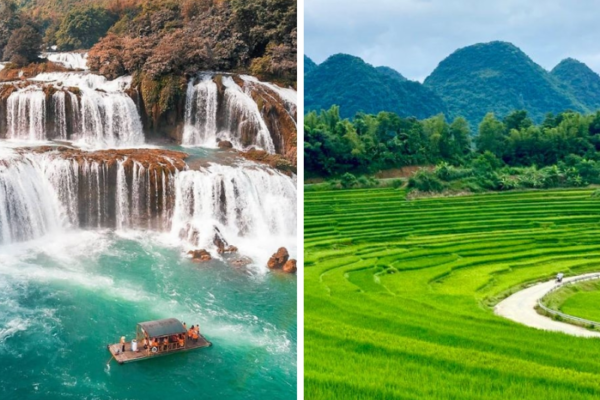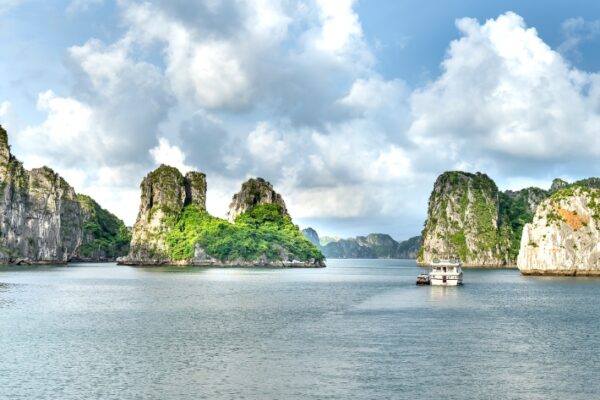8 Best North Vietnam Provinces Worth Visiting: A Regional Treasures Tour
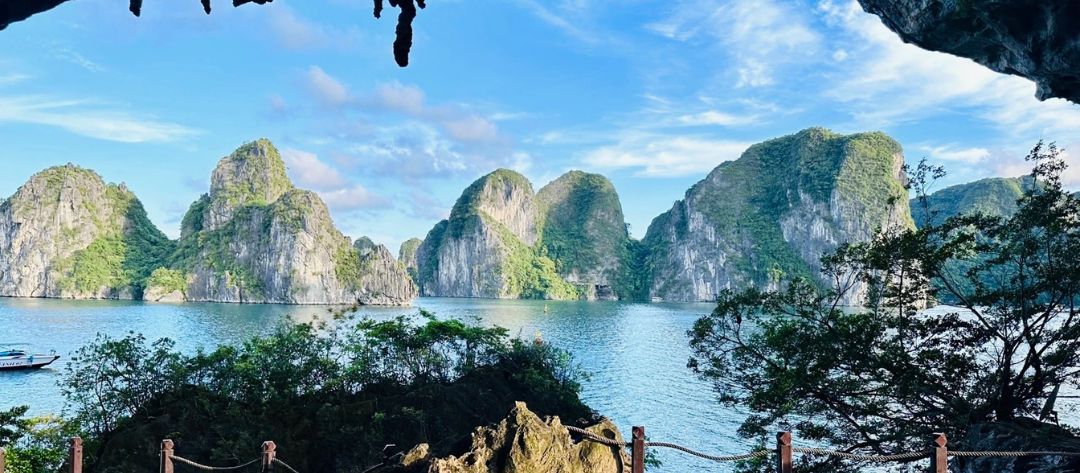
Each region in Vietnam carries its own features, but the North is something truly special. This guide explores 8 must-visit North Vietnam provinces, highlighting natural landscapes, cultural treasures, and memorable travel experiences. Check out these spots and save the tips for the best trip ever!
Northeast: Coastal Wonders and Hidden Delights
Quang Ninh – Halong Bay & Beyond
UNESCO-Listed Halong Bay
Halong Bay, spanning over 1,600 islands and islets, is celebrated for its exceptional geological formations and breathtaking seascapes.
Recognized by UNESCO in both 1994 and 2000, this natural wonder is famous for its limestone pillars rising from emerald-green waters, creating scenes that seem almost otherworldly. It’s the kind of beauty that invites quiet reflection as much as wide-eyed wonder.
Out on the water, life slows to the gentle rhythm of the waves. Cruises weave through hidden corners, leading you to vast caves, mysterious grottoes, and floating fishing villages that preserve traditions passed down for generations. With every turn, you step deeper into a landscape alive with biodiversity and wrapped in a serene, timeless calm.
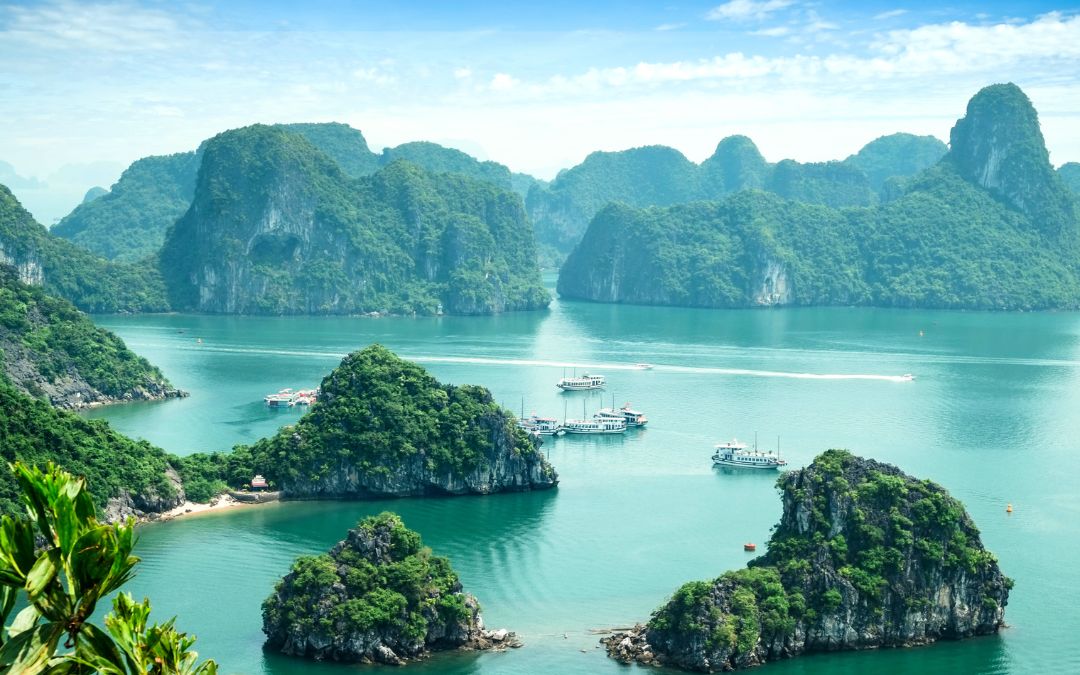
Halong Bay stands as the crown jewel among North Vietnam provinces
> Explore This Useful Blog: Discover The Best Ways to Travel from Hanoi to Halong Bay
Bai Tu Long Bay and Lan Ha Bay
If you’re drawn to quieter horizons, Bai Tu Long Bay feels like a secret waiting to be uncovered. Just beyond the crowds of Halong, this hidden stretch of sea is known for its pristine waters, untouched islands, and a calm that lingers long after you’ve left. Here, time slows—perfect for gliding across the water in a kayak, slipping into the sea for a swim, or simply letting the stillness wash over you.
Not far away, Lan Ha Bay unfolds beside Cat Ba Island. With more than 300 scattered islets, it’s a place where sandy beaches invite bare feet and clear waters call for long afternoons of swimming or paddling. Every corner seems to whisper its own quiet story, a reminder that beauty doesn’t need to shout to be heard.
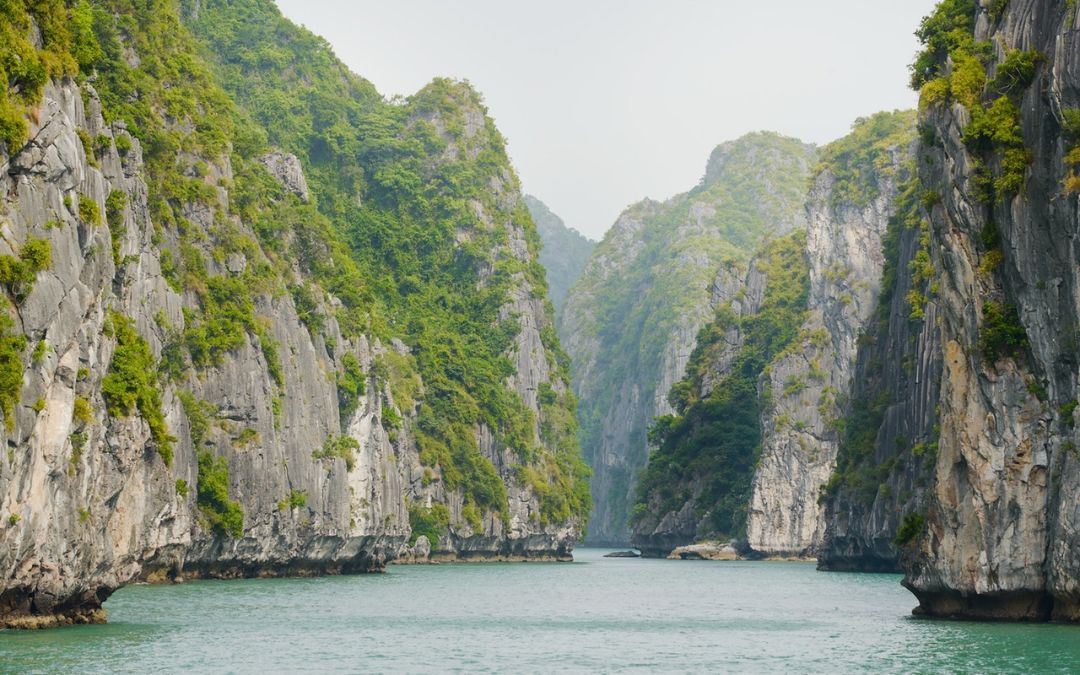
North Vietnam provinces reveal their hidden gems through the pristine waters of Bai Tu Long Bay and Lan Ha Bay.
City Delights
- Bai Chay Beach: Bai Chay Beach is a popular stretch of soft sand in the heart of Halong City, ideal for swimming and sunbathing. Lined with cafés and snack stalls, it’s perfect for relaxation and casual water activities.
- Halong Marine Boulevard: This scenic coastal promenade offers panoramic views of Halong Bay, modern parks, and cafés. It’s a favorite spot for walking, cycling, and evening strolls under illuminated pathways.
- Quang Ninh Museum & Library: Showcasing the region’s history, geology, and ethnic cultures, the museum combines modern architecture with interactive exhibits. It also houses a library and research facilities for educational exploration.
- Sun World Halong Park: A large amusement complex with rides, gardens, and the Queen Cable Car linking coastal and hilltop areas. Visitors enjoy panoramic bay views, cultural attractions, and seasonal events.
- Halong Night Market: A bustling evening market offering handicrafts, clothing, and local street food. The vibrant atmosphere and variety of stalls make it ideal for experiencing Halong’s culture and cuisine.
- Seafood Dining: Waterfront restaurants serve freshly caught seafood daily, from grilled squid to shrimp hotpots, often with stunning views of Halong Bay for a relaxing meal.
Bac Kan – Serenity on Ba Be Lake
Ba Be Lake
Tucked away in the northern province of Bac Kan lies Ba Be Lake, Vietnam’s largest natural freshwater lake. Covering around 6.5 square kilometers and resting at an elevation of 145 meters, it feels like a world apart—serene, expansive, and quietly alive.
The name “Ba Be” comes from the Tay language, meaning “three lakes”, a nod to its trio of connected waterways: Pe Lam, Pe Lu, and Pe Leng. Together, they form a shimmering expanse that locals have cherished for generations.
What makes Ba Be truly enchanting among North Vietnam provinces is its setting. Encircled by limestone mountains and cloaked in evergreen forests, the lake is at the heart of Ba Be National Park—an ASEAN Heritage Park celebrated for its rich biodiversity. Here, over 1,800 species of plants and animals thrive, from vibrant birdlife to rare primates like the critically endangered Tonkin Snub-nosed Monkey and François’ Langur.
On the surface, Ba Be invites gentle boat rides, reflections on still waters, and the sense of being cradled by nature. Beneath it all, it carries the spirit of a living sanctuary, where wilderness and tradition quietly endure side by side.
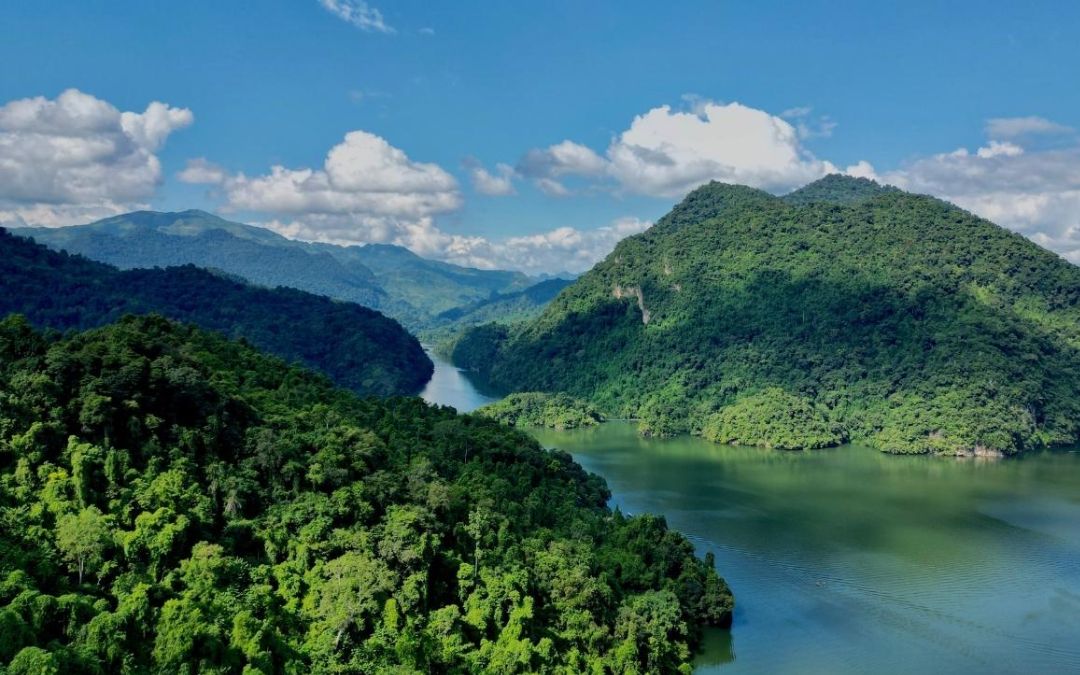
Ba Be Lake exemplifies the pristine natural beauty found throughout North Vietnam provinces.
Highlighted Activities
- Boat Excursions: Visitors can embark on traditional wooden boat rides across Ba Be Lake, exploring its serene waters and surrounding landscapes. These excursions often include visits to notable sites like Puong Cave, a vast limestone cavern home to thousands of bats.
- Homestays with Tay Communities: Staying with local Tay families in traditional stilt houses offers an authentic cultural experience. Guests can partake in daily activities, enjoy home-cooked meals, and learn about the rich traditions and customs of the Tay people.
- Cultural Exploration: The region is home to several ethnic minority villages, including Pac Ngoi, Bo Lu, and Ban Cam. These communities offer insights into traditional lifestyles, handicrafts, and agricultural practices, providing visitors with a deeper understanding of the area’s cultural heritage.
Cao Bang – Waterfalls and Revolutionary History
Ban Gioc Waterfall
On the border between North Vietnam provinces and China, the Quay Son River suddenly transforms into one of Southeast Asia’s most breathtaking sights—Ban Gioc Waterfall.
At 30 meters high and stretching 300 meters across, it’s not just impressive in scale; it’s also ranked as the world’s fourth largest border waterfall. The water tumbles down in three distinct tiers, each cascade carving its way over rugged limestone cliffs before settling into turquoise pools below.
The scene feels almost like a painting. Mist rises with the roar of the falls, while surrounding karst mountains and lush greenery frame the landscape in every direction. For photographers, it’s a dream; for nature lovers, a reminder of how wild beauty can still leave us speechless.
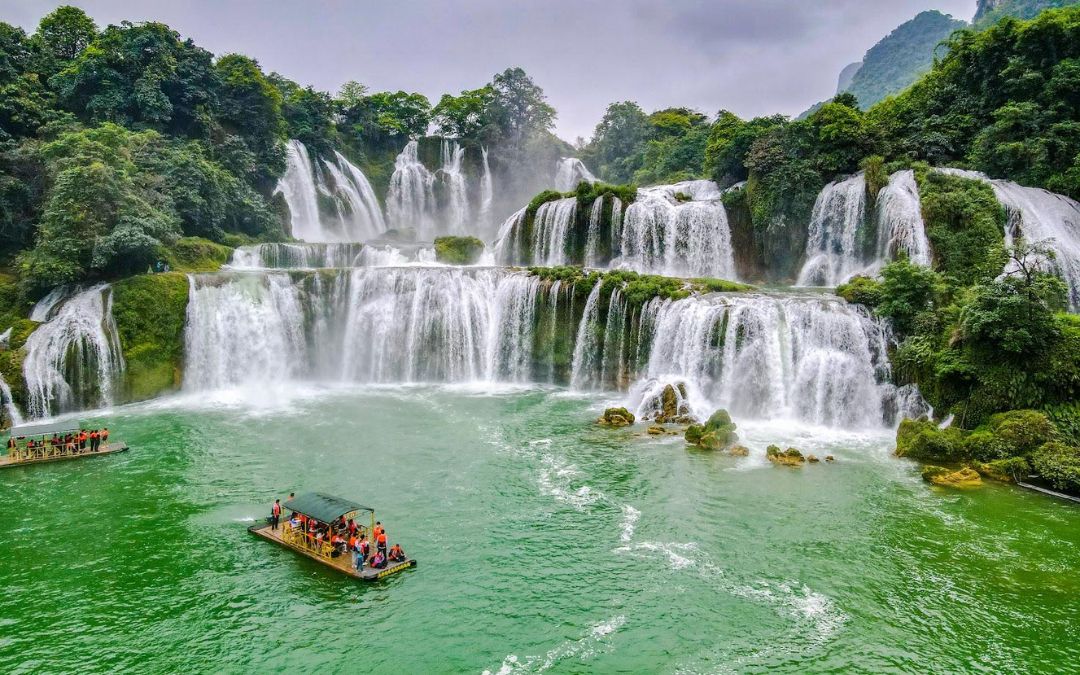
Among North Vietnam provinces, Ban Gioc Waterfall represents one of Southeast Asia’s most spectacular natural wonders.
Nguom Ngao Cave
Just a short 5-kilometer journey from the thundering Ban Gioc Waterfall lies a quieter wonder—Nguom Ngao Cave. Known locally as “Tiger Cave”, it has been part of the Non Nuoc Cao Bang UNESCO Global Geopark since 2018, a recognition that speaks to its ancient and extraordinary nature.
Step inside, and you’re entering a world shaped over 400 million years. Towering stalactites hang like chandeliers, while stalagmites rise from the ground in formations that spark the imagination—some resembling animals, others like sculptures carved by unseen hands.
The name itself, “Nguom Ngao”, comes from the Tay language and recalls local legends of tigers that once roamed this land. It adds a layer of mystery, as if the cave’s dark chambers are still echoing with stories from long ago.
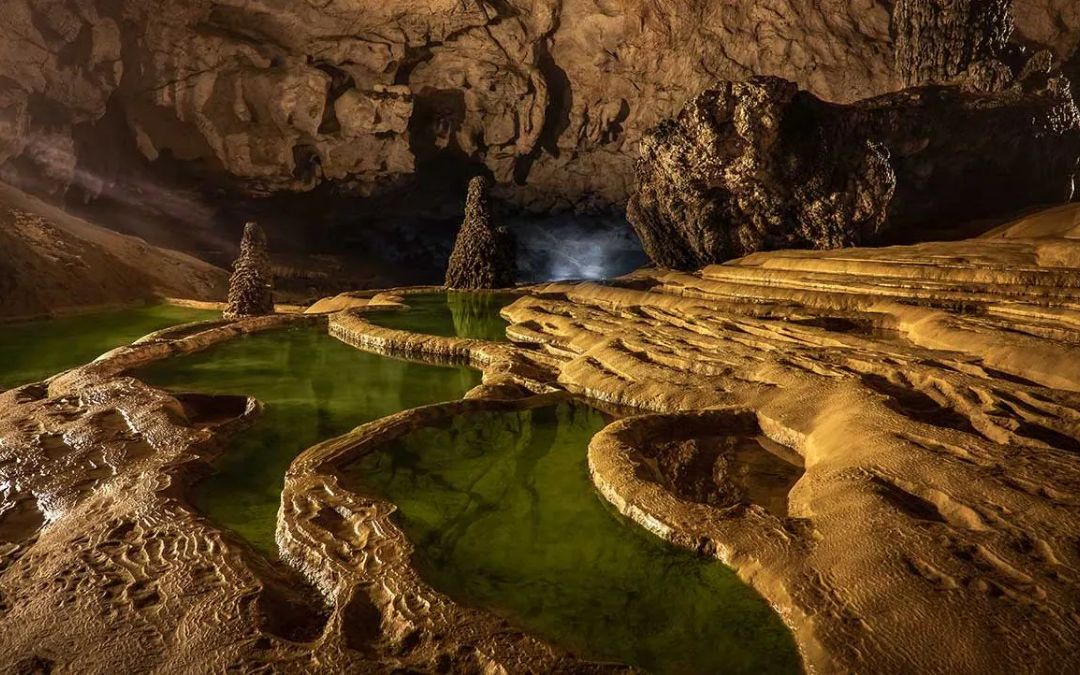
Nguom Ngao Cave showcases the geological wonders that make North Vietnam provinces a UNESCO Global Geopark destination.
Thang Hen Lake
About 30 kilometers from Cao Bang City, Thang Hen Lake rests quietly among rugged limestone peaks, a mirror of calm water cradled by nature. It’s one of 36 interconnected lakes in the area, all linked by underground rivers that keep its waters fresh, clear, and ever-changing with the seasons.
The setting is as peaceful as it is striking. Dense forests hug the shoreline, while nearby Tay villages bring a sense of tradition and rhythm to the landscape. Out on the water, you can take a gentle boat ride; on land, trails invite you to wander deeper into the mountains or simply sit and take in the silence.
What makes Thang Hen special isn’t only its beauty, but its quiet balance of nature and culture. It’s the kind of place where you can drift between moments—paddling across still waters, sharing stories with local families, or just watching the light fade across the lake—and feel the world slow down.
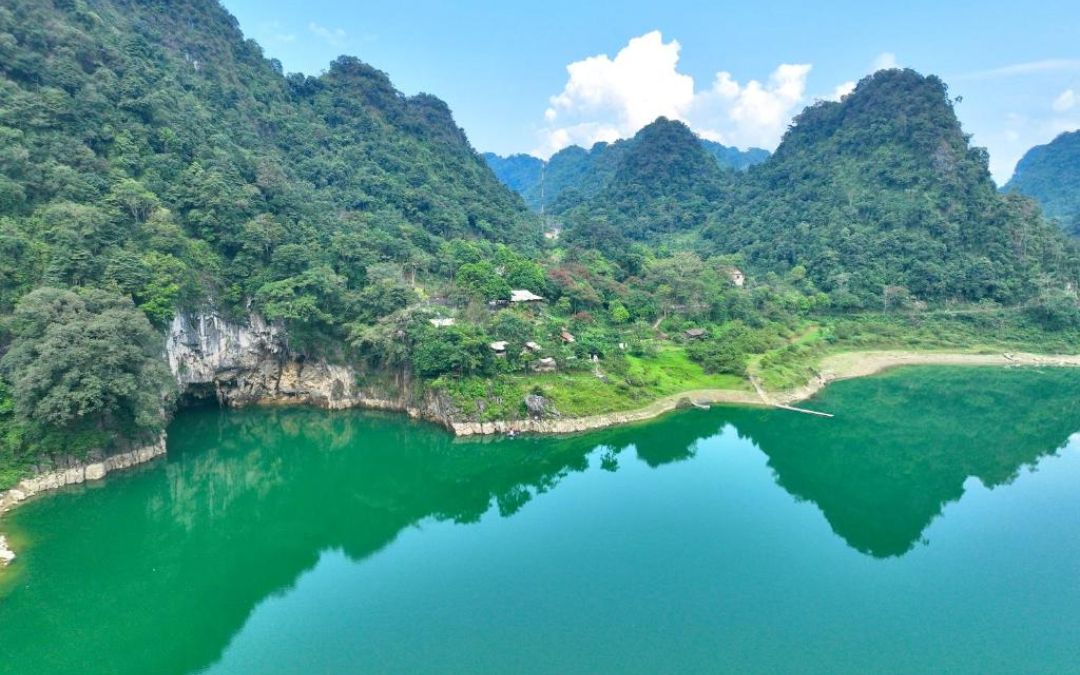
Thang Hen Lake reflects the serene mountain beauty that defines North Vietnam provinces’ natural landscapes.
Pac Bo Historical Site
Close to the Vietnam–China border lies Pac Bo, a place where history lingers in every stone and stream. It was here, in 1941, that President Ho Chi Minh returned to his homeland after more than thirty years in exile, marking the beginning of a new chapter in Vietnam’s struggle for independence.
Coc Bo Cave still stands as the simple shelter where he lived and worked for several months, its walls once lit by a modest fire and filled with the weight of revolutionary plans. Just outside flows the Lenin Stream, named by Ho Chi Minh himself in honor of the Russian revolutionary leader—a gentle ribbon of water that has since become a symbol of resilience and change.
Today, visitors can step inside the cave, trace the path of the stream, and view artifacts that keep these stories alive. More than a historical site, Pac Bo is a reminder of determination born in the most humble of places, inviting reflection on the journey that shaped Vietnam’s future.
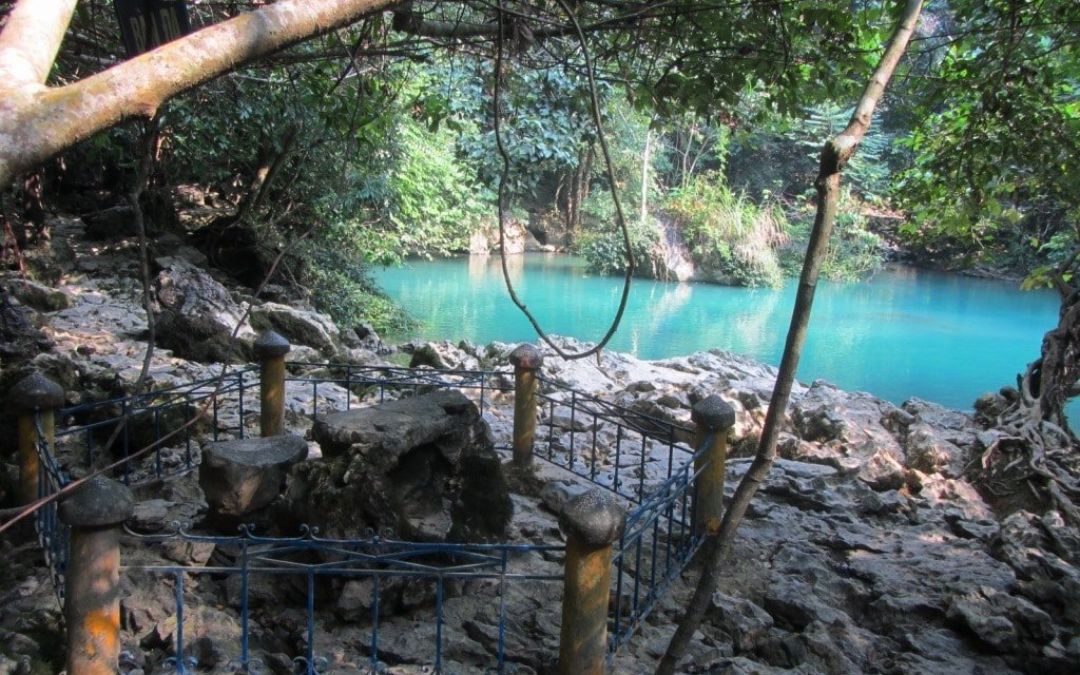
Historical sites like Pac Bo demonstrate how North Vietnam provinces preserve Vietnam’s revolutionary heritage.
Northwest: Mountain Majesty & Cultural Richness
Ha Giang – The Legendary Loop
Ha Giang Loop
Exploring North Vietnam provinces via the Ha Giang Loop feels less like a road trip and more like a journey into another world. Winding across roughly 350 kilometers, the route carries you through Vietnam’s northernmost reaches, where mountains rise like stone guardians and valleys open into sweeping, endless views.
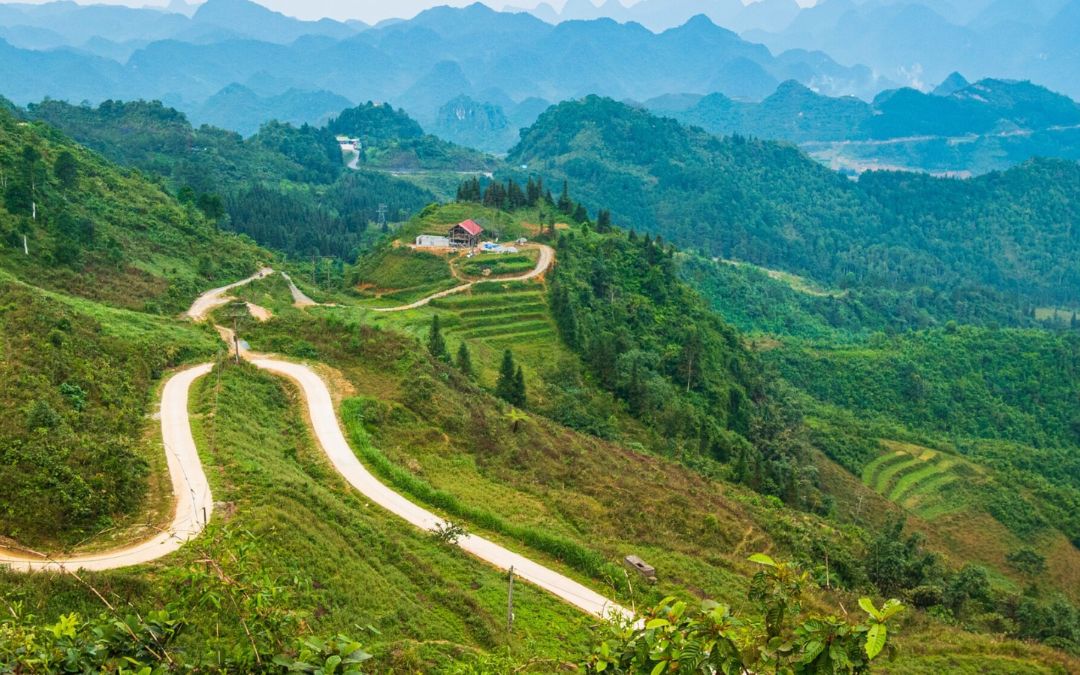
The Ha Giang Loop offers adventurous travelers the most dramatic mountain scenery across North Vietnam provinces.
Key Highlights
- Ma Pi Leng Pass
Often called the “King of Passes”, Ma Pi Leng is a road that feels as daring as it is breathtaking. Stretching about 20 kilometers at an altitude of 1,200 meters, it clings to the cliffside with dizzying views at every bend. Below, the jade-colored Nho Que River winds through deep gorges, carving a landscape so dramatic it lingers in memory long after the ride ends.
- Dong Van Karst Plateau
Further along the journey, the land opens into the Dong Van Karst Plateau, a UNESCO Global Geopark where time itself seems etched into stone. Here, limestone formations tell stories millions of years old, while rare plants and animals thrive in this rugged terrain. Scattered across the plateau are villages of ethnic communities, each carrying traditions that bring the highlands to life in song, craft, and daily rhythms.
- Lung Cu Flag Tower
At the northernmost tip of Vietnam rises the Lung Cu Flag Tower, standing proudly at 33.15 meters tall. Crowned with a flag measuring 54 square meters, it honors the unity of Vietnam’s 54 ethnic groups. The climb—839 steps in total—is both a physical challenge and a symbolic journey. At the top, sweeping views unfold, stretching across mountains and valleys that seem to touch the sky.
Ethnic Diversity
Among North Vietnam provinces, Ha Giang is a mosaic of diverse ethnic groups, each contributing to the region’s rich cultural fabric. The province is home to over 20 minority groups, including the H’mong, Tay, and Dao, among others.
The H’Mong, with their vibrant embroidered clothing, often fill the markets with splashes of indigo, red, and silver. The Tay, known for their stilt houses and gentle songs, bring a quieter rhythm to daily life along the valleys. The Dao, with their distinctive headscarves and age-old rituals, carry a spiritual connection to the land.
> Explore This Useful Blog: Heavenly Peaks – The Most Beautiful Mountains in Vietnam for Nature Lovers
Cultural Experiences
- Traditional Markets
In towns like Meo Vac and Dong Van, weekly markets come alive with color and sound. These gatherings are more than places to trade goods—they’re where communities meet, share stories, and keep traditions alive. Walking through the stalls, you’ll catch the rhythm of highland life, from embroidered fabrics and handmade tools to the laughter of friends greeting one another after long weeks apart.
- Architectural Heritage
The landscape of Ha Giang isn’t only defined by mountains and valleys; it’s also etched with the artistry of its people. Traditional stilt houses rise gracefully above the ground, while ancient stone walls line villages with a quiet strength. Perhaps most striking is the H’Mong King’s Palace in Sa Phin, a blend of history and ingenuity that still stands as a symbol of cultural pride.
- Cultural Festivals
Festivals in Ha Giang reveal stories that words alone can’t capture. Among them, the Khau Vai Love Market is the most poignant. Held once a year, it brings together men and women from different ethnic groups to reconnect with past loves or friendships. For visitors, it’s a rare window into the depth of highland traditions, where personal histories intertwine with community spirit.
Yen Bai – Iconic Rice Terraces
Mu Cang Chai
High in North Vietnam provinces’ mountains lies Mu Cang Chai, a place where the landscape feels hand-sculpted by time and tradition. Its terraced rice fields, especially in the villages of La Pan Tan, Che Cu Nha, and De Xu Phinh, are among the most spectacular in the country.
Carved into steep hillsides by the H’Mong people, these terraces are more than farmland—they’re a testament to resilience and artistry, creating a rhythm between human life and the natural world. During the growing season, the fields glow in shades of emerald, a lush patchwork stretching as far as the eye can see. Come harvest, they transform again, shimmering gold beneath the autumn sun.
It’s a landscape that changes with the seasons, yet always tells the same story: of people living in harmony with the land, shaping beauty from necessity, and leaving behind views that inspire wonder in every traveler who stands before them.
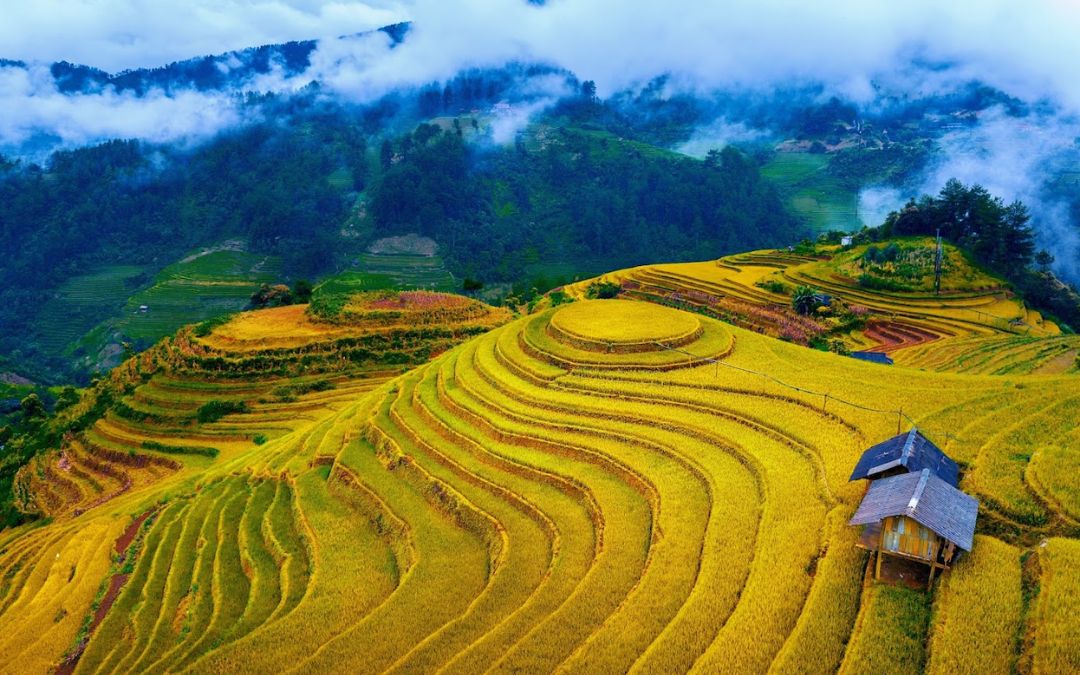
The stunning rice terraces of Mu Cang Chai showcase the agricultural beauty found across North Vietnam provinces.
Ta Xua Peak
Rising to 2,865 meters, Ta Xua Peak marks the border between Yen Bai and Son La, a rugged summit that appeals to those with a spirit for adventure. The journey here is not an easy one—its trails are demanding, its ridges narrow—but the rewards are unlike anywhere else.
One of the highlights is the famed “Dinosaur Spine”, a knife-edge ridge where each step is framed by sweeping views on either side. It’s a path that tests your balance, but also gifts you with a perspective few ever forget.
The trek winds through mossy forests and rocky terrain, the air growing thinner and cooler as you climb. Then comes the summit—where the world falls away into a boundless sea of clouds, drifting and shifting beneath your feet.
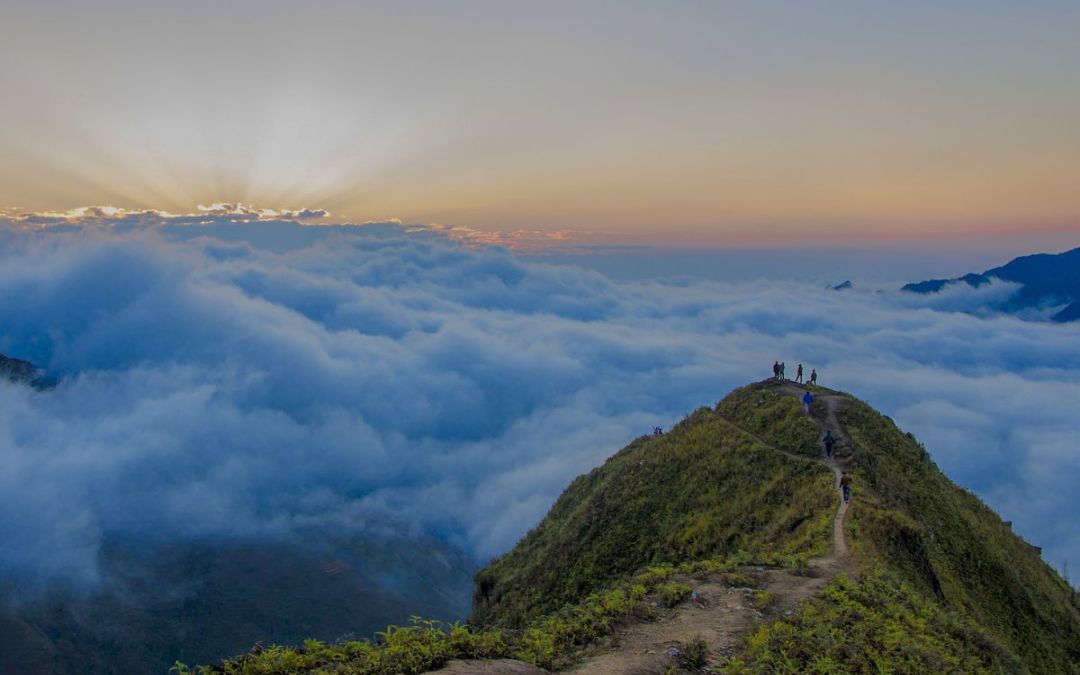
Among North Vietnam provinces, Ta Xua stands out as a premier destination for cloud hunting and mountain trekking.
Suoi Giang Commune
Perched high in the northern mountains, between 800 and 1,400 meters above sea level, Suoi Giang is a place where time seems to slow. Here, ancient Shan Tuyet tea trees grow wild on misty hillsides—some of them over 300 years old, their twisted trunks standing like silent witnesses to centuries gone by.
The H’Mong people have tended these trees for generations, carefully harvesting their leaves to create a tea unlike any other. Strong yet smooth, rich in flavor with a fragrance touched by mountain air, Shan Tuyet tea carries the essence of the land in every sip.
Wandering through Suoi Giang, you’ll find more than just tea plantations. There’s a sense of peace in the rolling hills, a rhythm of life rooted in nature and tradition. It’s a retreat into quiet beauty, where the simple act of sharing tea becomes a window into culture, history, and the enduring bond between people and the earth.
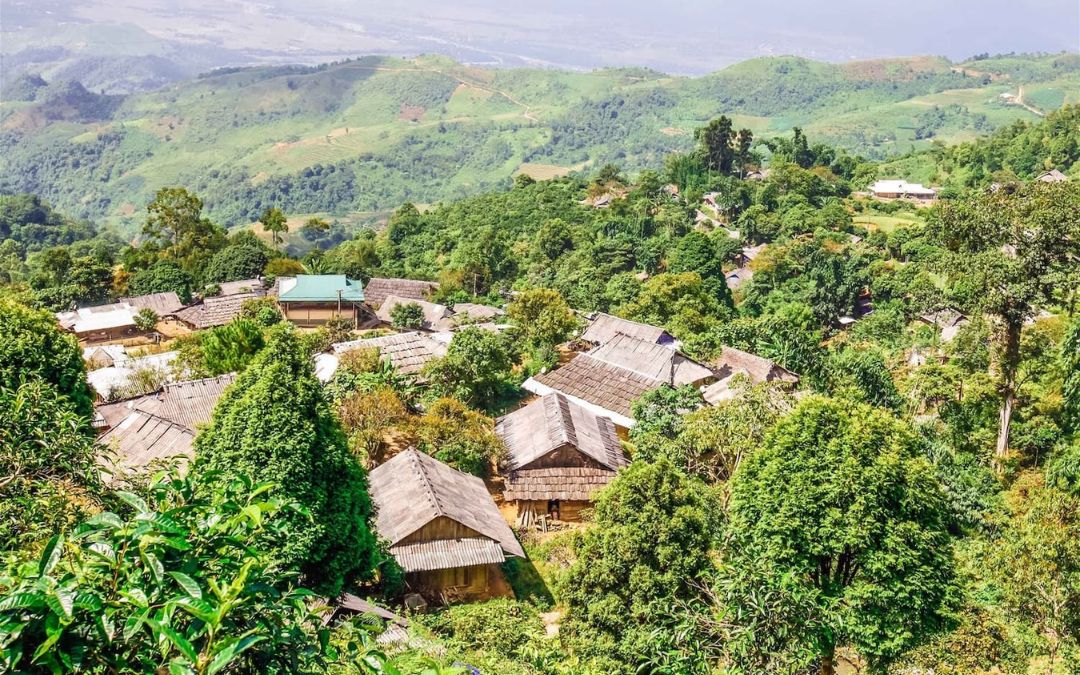
Suoi Giang Commune represents the ethereal mountain beauty that characterizes many North Vietnam provinces.
Moc Chau – Blossoms and Pastures
Heart Tea Hill
Tucked among the gentle highlands, nature and human hands have shaped something truly special at Heart Tea Hill. At first glance, it’s a lush expanse of green, rows of tea bushes stretching in perfect symmetry across the slopes. But then the pattern reveals itself: a heart, carefully cultivated, symbolizing love, harmony, and peace.
Walking the trails here is like stepping into a living painting. The air is crisp with the scent of fresh tea leaves, the hills roll softly into the distance, and the quiet rhythm of the fields has a calming effect on the soul.
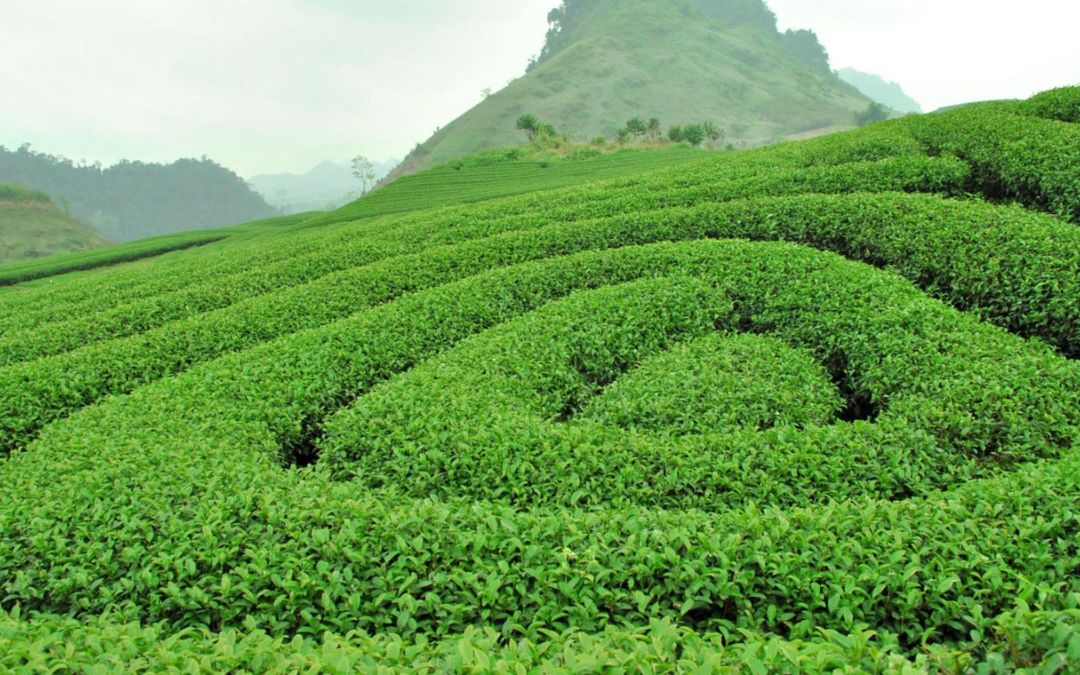
Heart Tea Hill exemplifies the lush tea plantation landscapes that define several North Vietnam provinces.
Ang Village Pine Forest
Step into Ang Village Pine Forest, and you’ll feel as though you’ve wandered into a northern echo of Da Lat. The air is cooler here, scented with resin and earth, carrying a quiet freshness that instantly soothes.
Tall pines rise in elegant clusters, their canopies whispering with every breeze. Paths weave through the forest, inviting you to slow your pace—whether for a gentle walk, a quiet moment beneath the trees, or simply to take in the shifting light between the branches.
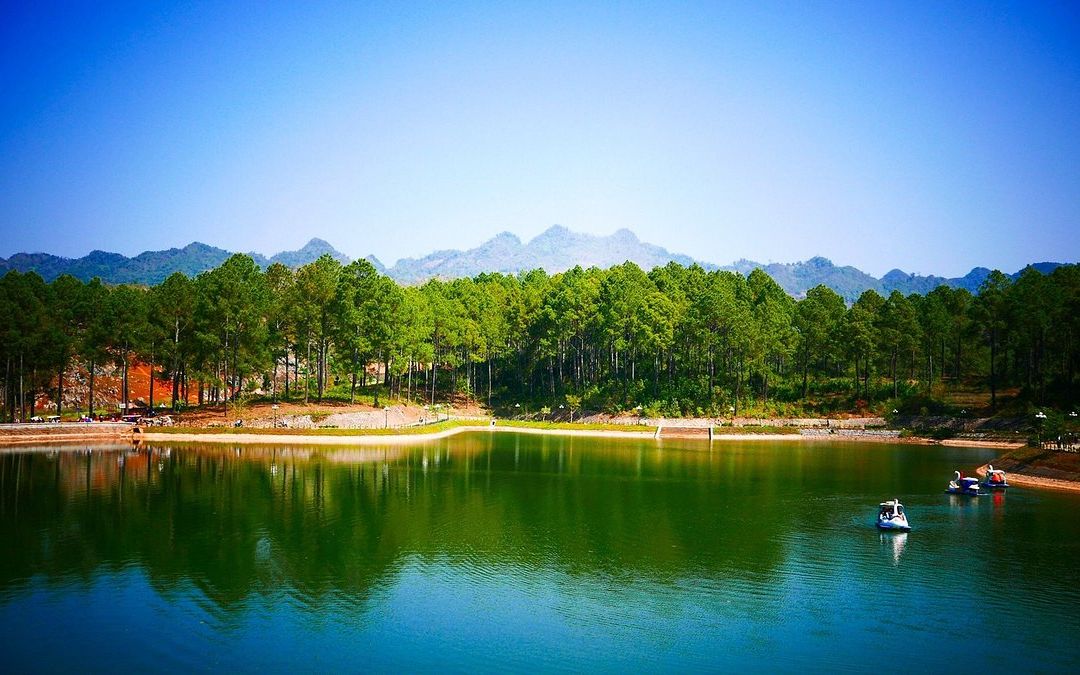
North Vietnam provinces feature pristine natural destinations like Ang Village Pine Forest that offer peaceful lakeside retreats.
Moc Chau Milk Farm
Set among the rolling hills of Moc Chau, the Milk Farm is where green pastures meet gentle routines of daily life. Here, wide fields stretch into the distance, dotted with grazing cows and framed by the soft curves of the highland landscape.
It’s more than just a working dairy farm. Visitors can catch a glimpse of the care that goes into every step of milk production—while at the same time soaking in the scenery that makes this place so peaceful. The air feels fresher, the pace slower, and there’s a quiet joy in simply wandering through fields where nature and farming coexist in harmony.
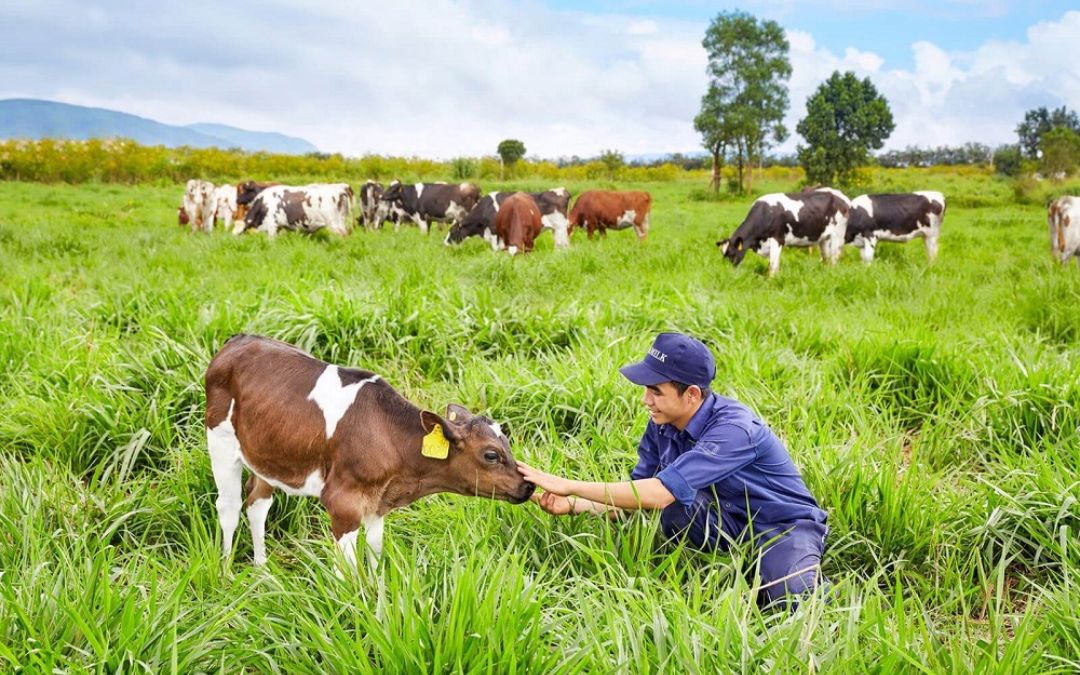
Moc Chau milk farm demonstrates the diverse agricultural heritage found throughout North Vietnam provinces.
Seasonal Festivals
Life in Moc Chau is not only shaped by its landscapes but also by the rhythms of its festivals. Each season brings moments where communities gather, traditions come alive, and visitors are welcomed into the heart of local culture.
Notable Festivals
- Hoa Ban Festival: Held annually on the 5th day of the lunar calendar, this festival celebrates the blooming of the Hoa Ban (ban flowers), symbolizing love and beauty.
- Love Market: A traditional gathering where young people from various ethnic groups meet to sing, dance, and express affection, fostering community bonds.
- Het Cha Festival: An agricultural festival where locals perform rituals and dances to honor their ancestors and pray for bountiful harvests.
Red River Delta: Ancient Roots & Karst Reflections
Ninh Binh – Landlocked Beauty
Trang An Landscape Complex
The Trang An Landscape Complex is where nature and history intertwine in the most breathtaking way. Recognized by UNESCO as a World Heritage Site, it’s a place that feels both timeless and alive.
Here, limestone karst peaks rise dramatically above tranquil valleys and winding rivers. Hidden caves and grottoes invite quiet exploration, while steep cliffs create a natural grandeur that feels almost otherworldly.
But Trang An isn’t only about scenery—it’s a cradle of history. Archaeological discoveries reveal that people have lived here for more than 30,000 years, leaving behind traces of a deep and continuous human story.
Beyond its striking cliffs and winding rivers, Trang An shelters a living world of remarkable diversity. The landscape is alive with more than 200 species of animals and over 600 species of plants, many of them rare or endangered.
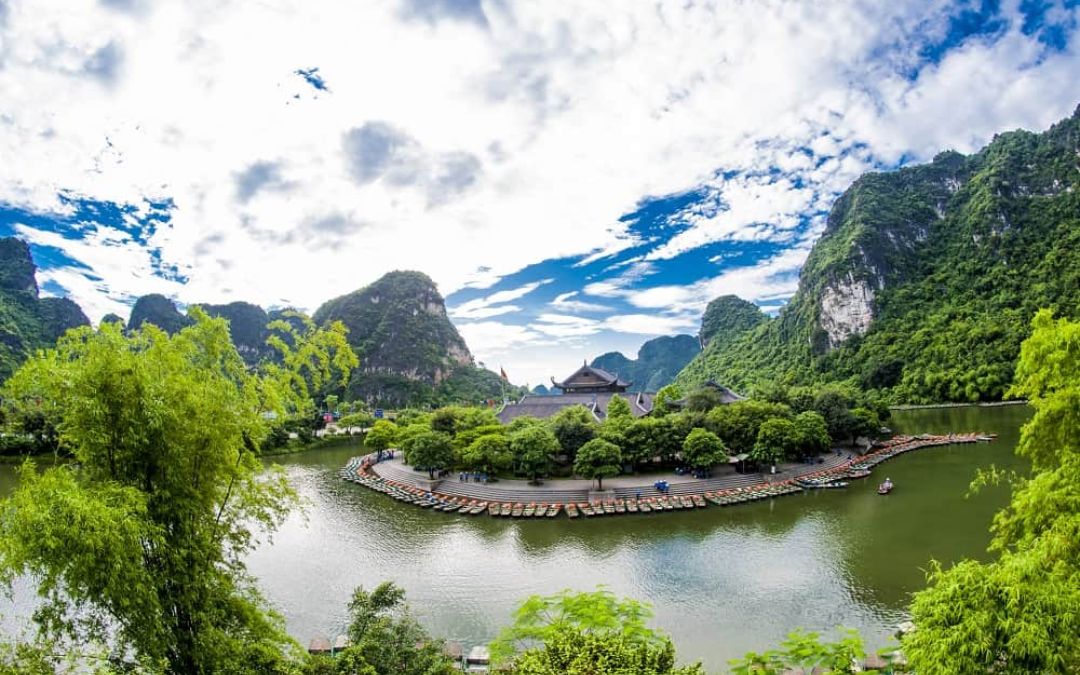
Trang An Landscape Complex highlights the UNESCO World Heritage sites that make North Vietnam provinces globally renowned.
Tam Coc – Bich Dong
Glide along the gentle waters of the Ngo Dong River, and it’s easy to see why Tam Coc – Bich Dong is often called “Halong Bay on land”. Towering limestone karsts rise straight from the fields, their reflections shimmering on the surface as boats drift by.
The name Tam Coc means “Three Caves”. True to its name, the journey takes you through three natural caverns, each one like a hidden gateway carved by time and water. The ceilings arch low in places, where cool shadows and echoes add a quiet sense of wonder.
Nearby lies Bich Dong, or “Green Cave”, embraced by the lush hillsides that surround it. Temples tucked into the cliffs and greenery cascading over stone give the place a timeless, almost otherworldly beauty.
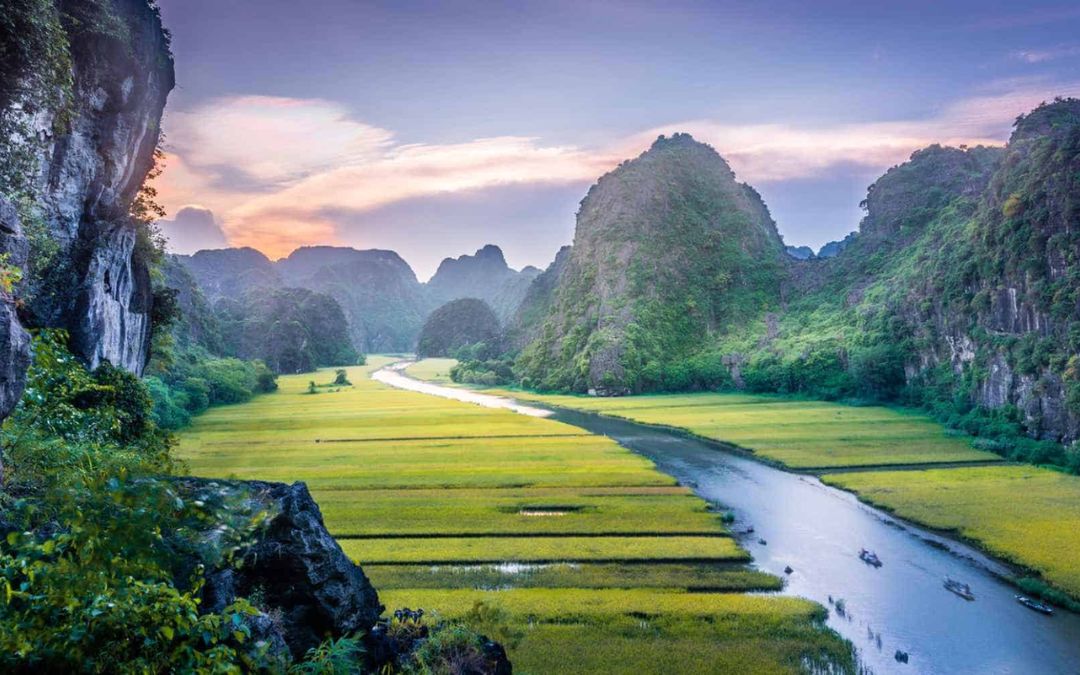
Tam Coc Bich Dong serves as one of the most iconic karst landscape destinations across North Vietnam provinces.
Hoa Lu Ancient Capital
Embrace the cradle of Vietnam’s early history at Hoa Lu, the country’s capital from 968 to 1010. Nestled among dramatic limestone mountains, the site was once a strategic stronghold—its natural barriers guarding the young nation during the Dinh and Early Le dynasties.
Today, the echoes of that imperial past linger in the quiet courtyards and ancient gates. Temples dedicated to Emperor Dinh Tien Hoang and Emperor Le Dai Hanh still stand, their altars heavy with incense and history. Wandering here, it’s easy to imagine the rise of Vietnam’s first emperors, their decisions shaping the nation from within these very walls.
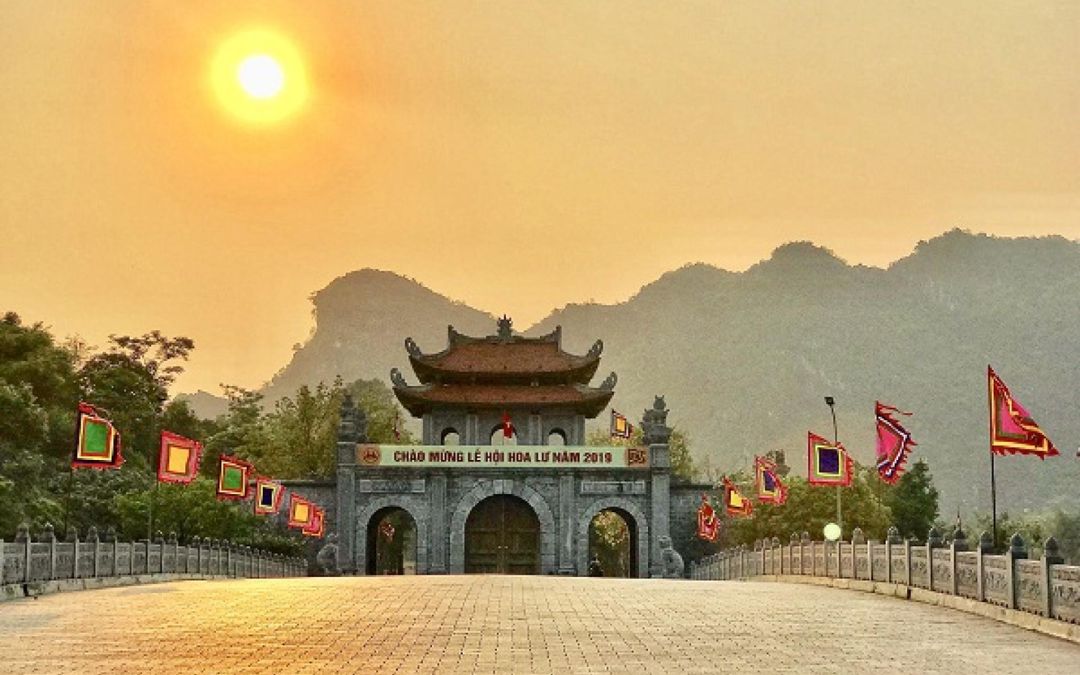
Historical sites like Hoa Lu Ancient Capital reflect the rich cultural heritage preserved throughout North Vietnam provinces.
Bai Dinh Pagoda
Rising from the slopes of Bai Dinh Mountain, this vast Buddhist complex is known as one of the largest temple complexes in Southeast Asia.
The grounds weave together the ancient pagoda, with its timeless charm, and newly built halls that speak to modern craftsmanship and spiritual ambition. Among its treasures are the Tam The Hall and the immense bronze statue of Maitreya Buddha, a figure so colossal it seems to watch over the valley below.
Bai Dinh also holds remarkable records—the largest bronze Buddha statue in Asia, the longest Arhat corridor in Asia—yet beyond the superlatives, it’s the atmosphere that lingers most. Walking its paths, surrounded by rows of serene stone figures and the scent of incense drifting on the breeze, you can’t help but feel a sense of peace settle in.
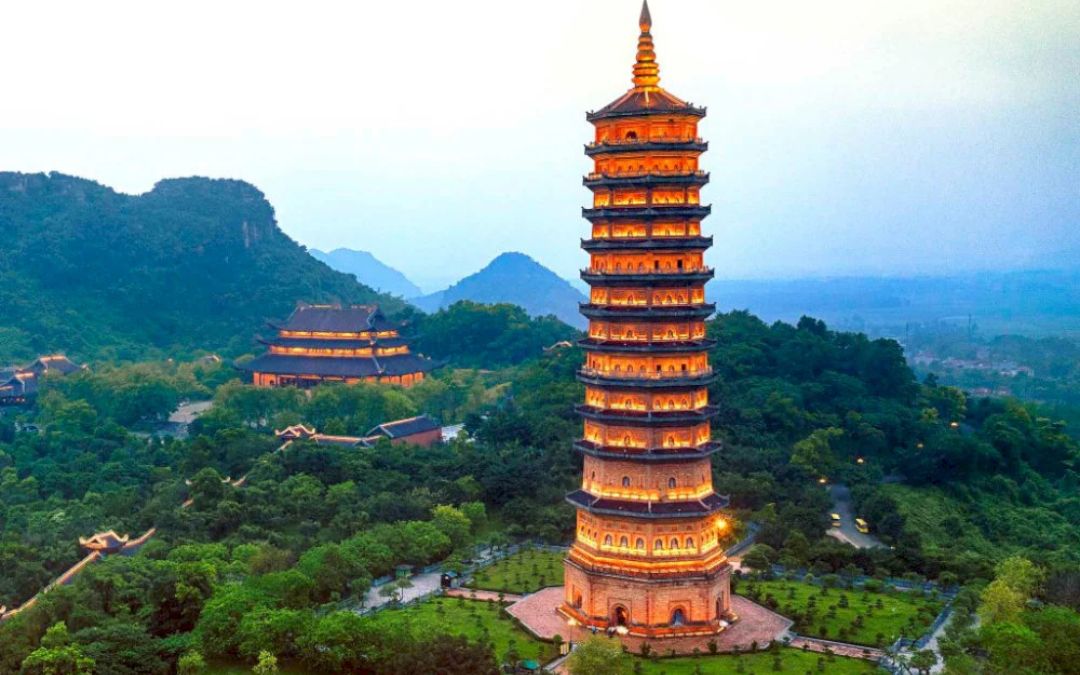
Bai Dinh Pagoda stands as one of the most significant Buddhist architectural achievements within North Vietnam provinces.
Van Long Nature Reserve
Tucked away in the Red River Delta, Van Long Nature Reserve feels like a world suspended in stillness. Known as the largest wetland reserve in the region, it’s a place where the water reflects the sky like glass, and silence is broken only by the dip of an oar or the call of a bird overhead.
A simple boat ride here becomes something like an immersion into nature’s quiet rhythms. Limestone peaks rise from the water like ancient sentinels, while delicate reeds sway along the banks. If you’re lucky, you might catch sight of the endangered Delacour’s langur, perched gracefully on the cliffs, or spot one of the many bird species that thrive in this sanctuary.
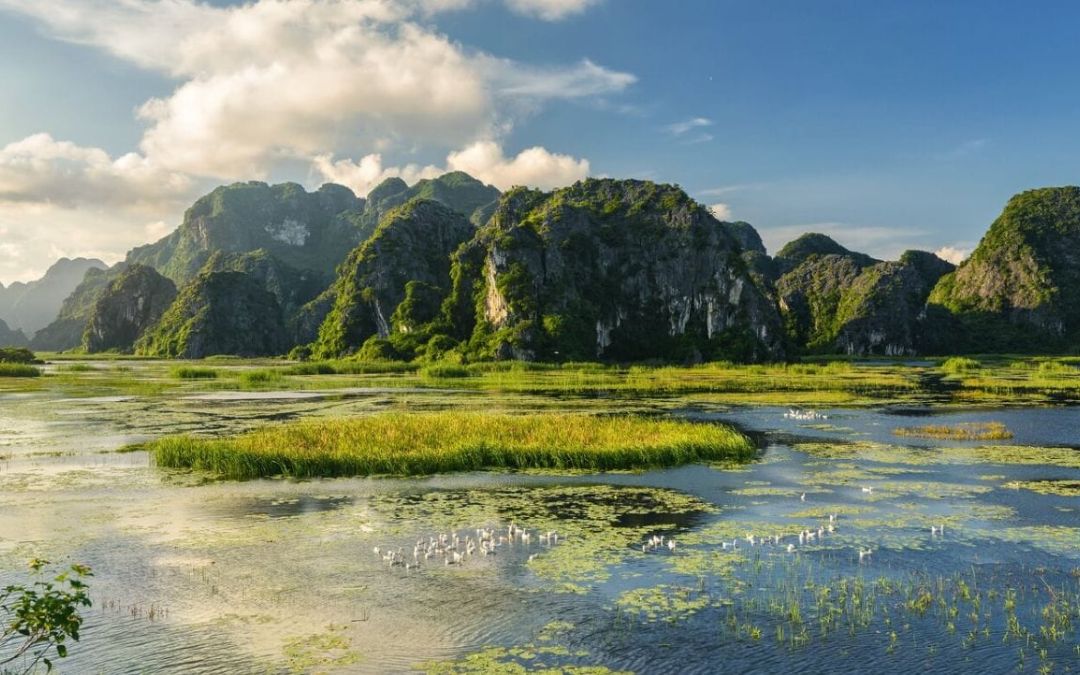
Van Long Nature Reserve protects the vital wetland ecosystems that contribute to biodiversity across North Vietnam provinces.
Hanoi – Heritage and Street-Food Culture
The 36 Streets of the Old Quarter
Often called the “36 Streets”, this maze of narrow lanes has been the city’s beating heart for centuries.
Each street once belonged to a guild, dedicated to a single craft or trade. Silk, silver, paper, herbs—every corner hummed with the rhythm of artisans at work. That system took root as far back as the 15th century, shaping the quarter into the vibrant hub it remains today.
Of course, the Old Quarter has grown beyond those original 36 streets, but the spirit lingers. Walk its alleys and you’ll still feel the pulse of a place where commerce, culture, and community have long intertwined. The bustle of shops, the fragrance of street food, the calls of vendors—it all weaves together into an atmosphere that is uniquely, unmistakably Hanoi.
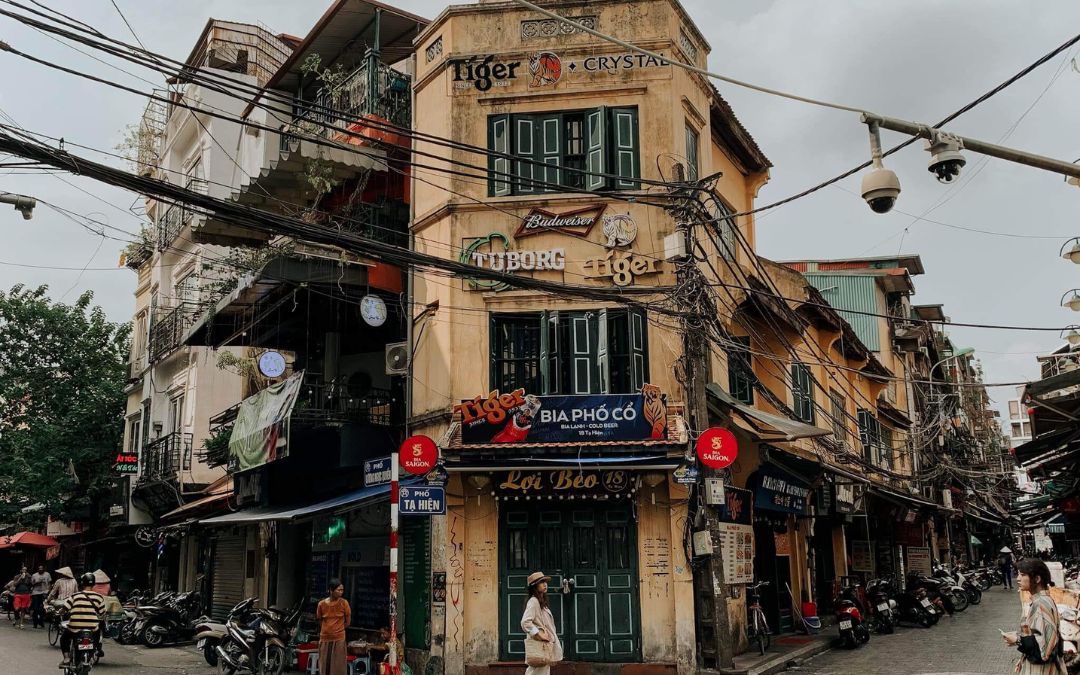
Hanoi Old Quarter represents the vibrant urban heritage that defines the cultural centers of North Vietnam provinces.
Hanoi’s Street Food
Hanoi’s street food scene is a testament to the city’s rich culinary traditions, offering a diverse array of flavors and dishes that reflect its cultural tapestry. From savory noodle soups to sweet treats, the streets come alive with the aromas of freshly prepared food.
> Explore This Useful Blog: Best Recommendations for an Authentic Food Tour in Hanoi
Must-Try Dishes
- Pho: A fragrant noodle soup made with beef or chicken, herbs, and rice noodles, often enjoyed as a hearty breakfast.
- Bun Cha: Grilled pork served with vermicelli noodles, herbs, and a side of dipping sauce, a favorite among locals and visitors alike.
- Banh Mi: A Vietnamese sandwich combining a crispy baguette with various fillings like pork, pate, and fresh vegetables.
- Cha Ca Lang: Turmeric-marinated fish grilled with dill and served with rice noodles, a specialty of Hanoi.
- Ca Phe Trung (egg coffee): A unique Hanoi invention, this creamy coffee is made with egg yolks, sugar, condensed milk, and robusta coffee.
Thang Long Water Puppet Theatre
Water puppetry, or Mua roi nuoc, is a centuries-old Vietnamese art form born in the rice paddies of the Red River Delta. Instead of wooden floors, the stage is a shimmering pool, where brightly painted puppets glide, dance, and splash under the skillful hands of hidden puppeteers.
At the Thang Long Water Puppet Theatre, these traditions are kept alive with performances that weave together folklore, history, and everyday village life. Dragons swirl across the water, farmers tend their fields, and mythical stories unfold to the rhythm of live music played on traditional instruments.
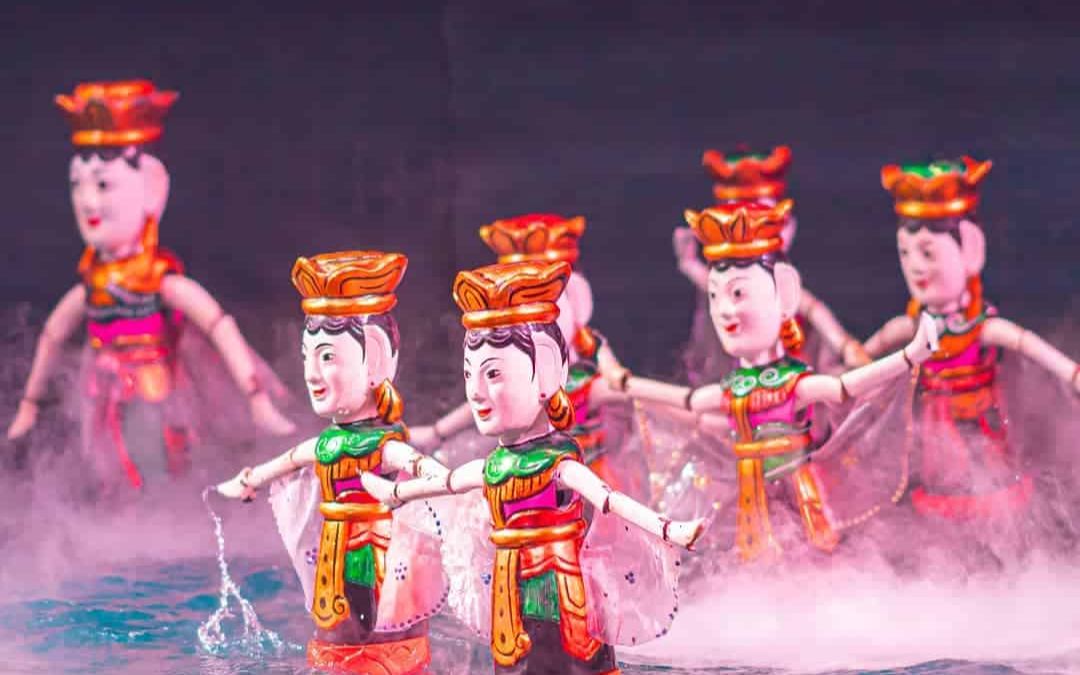
The Thang Long Water Puppet Theatre is a cultural gem often highlighted in journeys through the North Vietnam provinces.
Travel Tips to North Vietnam Provinces
Best Time to Visit
- Halong Bay: Best enjoyed during the shoulder seasons, such as spring (March–April) or autumn (September–November). These months offer mild weather, clearer skies, and lighter crowds.
- Moc Chau: Spring brings scenes straight from a painting: January to April unveil blooming plum, peach, and apricot flowers across the hills, while November–December dazzles with white mustard and marigold fields.
- Ha Giang: Lush greens and mirrored rice terraces as fields are filled with water during April–May. Peak for golden rice terraces and pink buckwheat blossoms from September–November.
- Ninh Binh: A year-round destination; its tranquil landscapes and boat rides remain beautiful regardless of season.
Suggested 10-Day Tour
Day 1–2: Hanoi → Ninh Binh
Train/bus down, then boat Trang An or Tam Coc, hike Mua Cave viewpoint, visit Hoa Lu & Bai Dinh.
Day 3: Ninh Bình → Ba Be
Long transfer day (consider private car or staged buses via Hanoi). Sunset boat on the lake.
Day 4: Ba Be → Cao Bang
Explore Ban Gioc Waterfall and Nguom Ngao Cave; overnight in Cao Bang. (Buses/tours available)
Day 5–7: Cao Bang → Ha Giang (city) → Loop (3 days)
Secure permit, choose to ride or go easy rider. Highlights: Ma Pi Leng Pass, Nho Que River, Dong Van old town, Lung Cu Flag Tower.
Day 8: Ha Giang → Yen Bai (Mu Cang Chai/Ta Xua)
Chase terraces (Sep–Oct) or cloud seas on Ta Xua.
Day 9: Yen Bai → Moc Chau
Pastures and tea hills; time it for spring blossoms if visiting Jan–Feb.
Day 10: Moc Chau → Hanoi
Easy return, last-night street food in the Old Quarter.
Practical Tips
- Weather & packing: Layers + rain shell year-round; north can be cool Nov–Feb.
- Safety on the Loop: Helmet and protective gear; avoid riding after dark or in heavy rain. Consider an easy rider if you’re not confident.
- Cash & connectivity: ATMs scarce in remote areas—carry cash; download offline maps.
- Boating etiquette: Life vests are provided; keep cameras in dry bags (Trang An boats run ~3 hours).
- Peak dates: Vietnamese holidays (esp. Tet) mean crowds and sold-out rooms—book ahead.
Final Word
Just in the northern reaches of Vietnam alone, the sheer variety of landscapes and cultural encounters is enough to leave any traveler in awe. From misty mountains and golden rice terraces to ancient capitals and riverside caves, every province carries its own story and rhythm of life. With the travel tips above, the journey becomes not only easier to plan but also richer in experience.
If the wonders of North Vietnam provinces spark your curiosity—or if the dream is to journey across the entire S-shaped land of Vietnam—Asia Pioneer Travel is ready to design a path that brings those ideas to life. Reach out today and let the adventure take shape from here.
